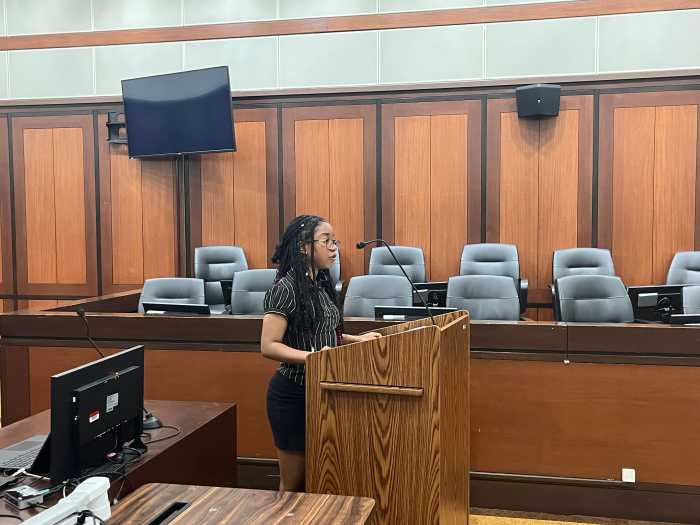It is something parents never like to think about. According to David Fields, Program Director of Ident-A-Kid for Long Island and the five boroughs, the subject of child safety is best approached frankly – and without kids present.
“I don’t want to scare [the kids],” said Fields, who talks to parents about safety practices and Ident-A-Kid products at PTA meetings. “Every day, 2,000 children are reported missing or abducted.”
He adds that if this statistic scares parents, not to mention kids, they might want to ask their school to invite Ident-A-Kid Services of America for a visit. Ident-A-Kid is a Florida-based organization with 250 locations nationwide that has sold child safety services, such as ID cards and school software, for 22 years. The company started a New York chapter in 2007, a first for the franchise, which mainly operates in small town locales.
Ident-A-Kid’s most popular product is the Immediate Response Child Rescue Identification card. The two-sided card looks like a driver’s license on the front, where it shows a head-and-shoulders color photograph of the child along with identifying characteristics such as name, nickname, height, weight, sex, age and eye color. On the back of the card are instructions as to what to do if a child is missing.
“People freak out. Less than 3 percent of parents carry wallet photos,” said Fields. When a child gets lost, “a police officer will ask [the parent] for identification for the child. You could say, ‘he’s about this tall’…But that means nothing. When you can turn around to somebody and say, ‘this is the person,’ they can immediately do what they have to do.” Showing an officer the card, he explained, consumes far less valuable time.
Rather than sell the card directly to parents, the company tries to organize schools to distribute promotional material, followed Program Days, at which participating children can get photographed and fingerprinted for the card. “We work through schools because that’s where the population of kids are,” said Fields.
There is no cost to the school for what Fields called “a Parent Option program,” meaning the fees ($8 per card, $12 per 3 cards, $15 per 5 cards) only apply to parents who want to buy the card.
School administrations frequently misunderstand Field’s purpose. “They just look at it as a sale, which it is not. I walk into a school and someone thinks I am there to sell them something, but I am not. I am there to promote something.”
Once a school gives Ident-A-Kid permission to advertise, the organization asks for list of students in every class, including teachers. An envelope with pre-notices to hand out to students is given to each teacher, followed by the actual order form for the card. Kids take the order forms with them on Program Day, which is a day chosen by the school, much like Picture Day, only kids get weighed, measured and fingerprinted as well as photographed. Three weeks later, the laminated cards are returned to students in the same order form envelopes.
“Everything is neatly organized so that when you say to me, ‘I want to do your program,’ all you have to do is give me your school list,” said Fields. Participating schools also receive a free copy of Complete Campus Security System (CCSS), a software program that allows visitors to the school to check in and out in an efficient manner.
Fields is proud of the efficient techniques that set his company apart from similar services. The background in front of which students are photographed is also a height chart, while the scale has a screen for digital fingerprint imaging. “They’re in and out of there before lunch,” he said. “Other companies take them out of class for 40 minutes each. With us, they’re out for 3 minutes.”
Although Fields has visited over a 200 schools in the area so far, only 40 have participated. To those who declined, Fields offers this point of view:
“We’re out to protect every child in this country. Give us that opportunity, to come into your school at no charge, let us set up, take care of everything, let us protect your children … This could happen to anybody at any time. Everyone should have some sort of identification.”





































